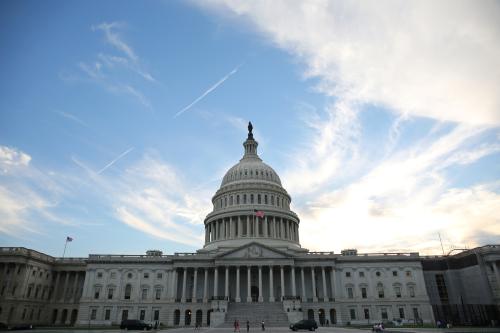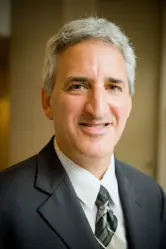As the House and Senate rush to complete a tax bill that will do little to improve the economy, it is worth looking at another recent tax cut to see what it did for growth.
The example is Kansas. In 2012, a Republican-led government slashed the individual income tax rate from 6.45 to 4.9 percent and eliminated the tax on income from pass-through businesses such as partnerships and sole proprietorships. Governor Sam Brownback proposed another round of tax cuts in 2013, promising that those cuts would be “like a shot of adrenaline into the heart of the Kansas economy.”
Brownback was building on the claims of noted supply siders like Arthur Laffer, who said that cutting income tax rates would result in “enormous prosperity” for the state. Stephen Moore, former head of the Club for Growth who later served as a campaign adviser to President Trump, asserted that “strategic tax rate reductions can ignite growth and employment.”
Since the 2012 tax cut, however, Kansas’s economy has lagged behind neighboring states and its budget has been in tatters.
Since the 2012 tax cut, however, Kansas’s economy has lagged behind neighboring states and its budget has been in tatters. Lawmakers were forced to make significant cuts in vital programs such as Medicaid, education, welfare, court funding, and infrastructure. Earlier this year—in the face of slow growth, two downgrades of Kansas’s bond ratings, and a budget shortfall of almost $900 million—the state’s Supreme Court mandated that Kansas increase education spending. And the Republican-led legislature reversed much of Brownback’s original tax cut.
In short, this clean experiment produced a clean result: The tax cuts were a fiscally irresponsible failure.
But to Ron Estes, the former Kansas state treasurer who is now a U.S. Representative, the tax cuts were a great success that should be emulated on the federal stage. Estes defended his view in the Wall Street Journal on November 14, but his arguments unwittingly showed that Kansas-like tax cuts are wrong for the national economy.
First, he claimed that Kansas’s weak budget and economic performance were caused in part by the end of “federal stimulus” in 2012. Was he arguing that President Obama’s stimulus spending – totaling over $2 billion from 2009 through 2012 – helped the state of Kansas? Interesting observation.
Second, he claimed that the tax cuts were a good idea but complained that the legislature failed to enact the tax-base-broadening pay-fors or the spending cuts that should have accompanied them. But that’s always a big problem: Tax cuts are easy to enact, but policymakers rarely are willing to accompany them with the hard financing choices they necessitate. Thus, tax cuts easily become fiscally irresponsible. Note that Republicans controlled the governor’s mansion and the Kansas legislature. They did not have to battle with Democrats over spending priorities. This was an example of a given set of policymakers not willing to pay for the tax cuts that they themselves enacted.
Third, Estes said the Kansas tax cuts were not comparable to the Tax Cuts and Jobs Act (TCJA) now in Congress. Because the TCJA cuts both corporate and non-corporate business rates, he said there wouldn’t be tax shelter opportunities between corporate and non-corporate business forms. That may be true, but it misses the point. The substitution in Kansas was between taxed wage income and untaxed non-corporate business income. That tax differential – which was roughly 5 percentage points in Kansas – would increase markedly under the bills in Congress to about 7-15 percentage points. The larger differential would provide greater incentives to recharacterize income as being in the lower-taxed category.
On the other hand, maybe Estes is right. Maybe the Kansas tax cut was a stunning victory for tax cut proponents. But the outcome in Kansas – large budget deficits, cuts in vital services, bond rating downgrades, and sluggish economic growth—is hard to ignore. If that’s a victory, let’s hope failure is an option.





Commentary
What congressional tax cutters can learn from Kansas
November 29, 2017